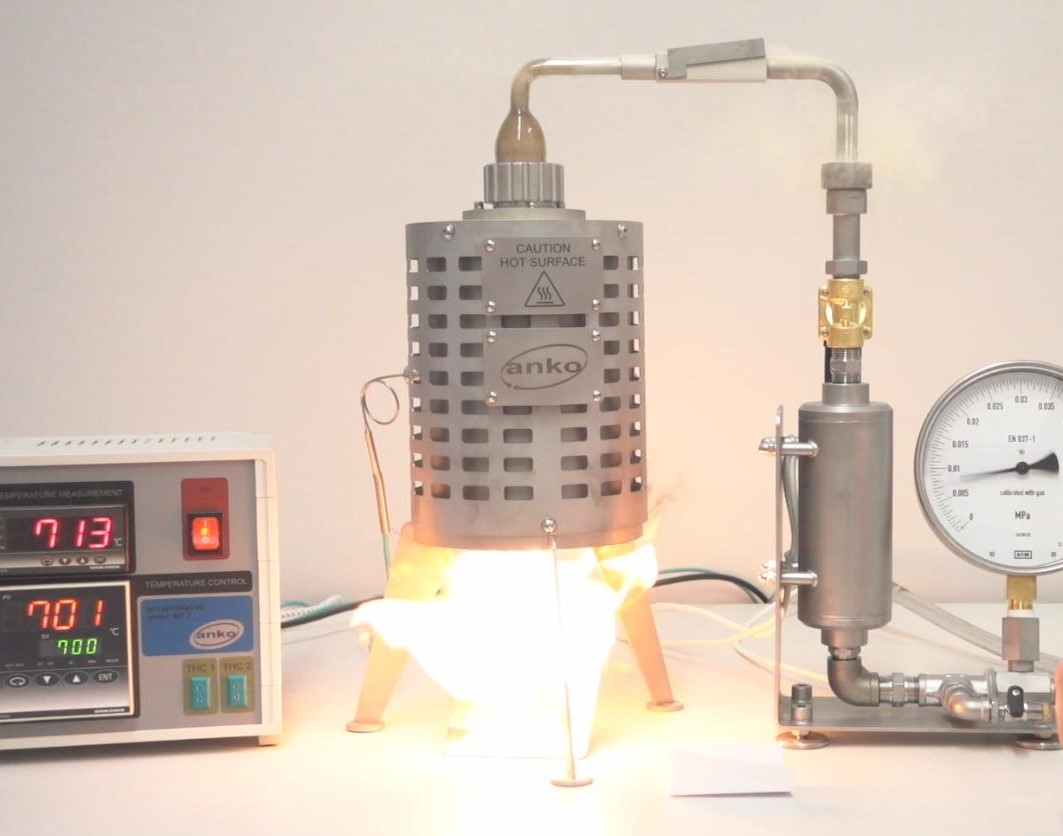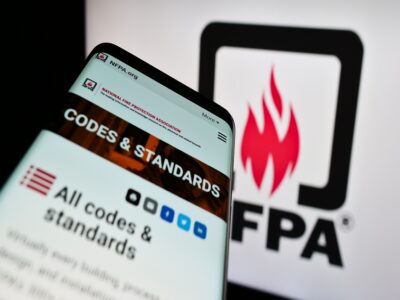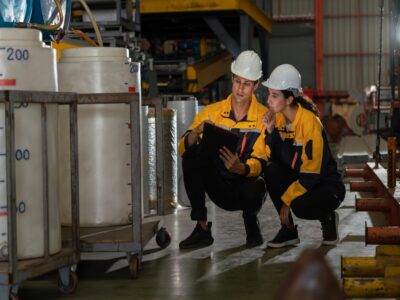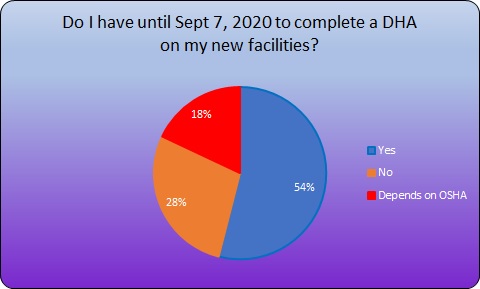
How to Comply with NFPA 660, Standard on the Fundamentals of Combustible Dusts and Particulate Solids
NFPA 660 is relevant to most businesses. We explain here what NFPA 660 is all about, why it is relevant to you, and how we can help you achieve compliance with the requirements for your facilities and operations.
What is NFPA 660?
NFPA 660 is a unified standard that integrates NFPA 652 and five commodity-and industry-specific codes and standards. It eliminates redundancy, harmonizes terminology, and provides a single reference point for all industries handling combustible dusts. NFPA 660 not only simplifies compliance but also incorporates the latest safety practices and research, ensuring companies have the tools they need to protect their people, property, and operations.
The standard’s rollout is underway, and while NFPA 660 has officially been introduced, organizations should prepare for the likely withdrawal of older standards over time. Transitioning to NFPA 660 now positions your company to meet current and future compliance expectations seamlessly.
Core Chapters of NFPA 660
These chapters lay out the essentials for managing combustible dust risks:
- Dust Hazard Analysis (DHA): Expanded guidance on identifying and managing combustible dust risks.
- Housekeeping and Maintenance: Clearer requirements for dust accumulation thresholds and cleaning methods.
- Ignition Source Control: Updated measures to prevent sparks, hot surfaces, and electrostatic discharges.
- Explosion Prevention and Mitigation: Includes references to NFPA 68 (venting) and NFPA 69 (prevention systems) for technical guidance.
Industry-Specific of NFPA 660
NFPA 660 includes tailored guidance for industries with unique dust hazards, such as:
- Agriculture and food processing.
- Combustible metals.
- Sulfur handling.
- Wood processing and woodworking facilities
This dual structure ensures you get both the broad principles, and the nitty-gritty details you need for your specific operations.
Do I need Combustible Dust Testing?
The standard NFPA 660 applies to all facilities and operations that manufacture, process, blend, convey, repackage, generate, or handle combustible dusts or combustible particulate solids. If you are handling or processing combustible powders it is very likely that NFPA 660 is applicable and that a Dust Hazard Analysis (DHA) is required. Combustible dust testing is important to ensure safety requirements are met.

Understanding dust explosions – Dust explosion testing
Dust cloud flash fires and explosions can occur when the following conditions come together:
- An explosible dust cloud develops.
- There is an oxidant present (this oxidant is usually just air).
- An ignition source occurs (eg flame, hot surface, electrostatic spark, electrical spark, thermal decomposition….) with enough energy to initiate the explosion.
Explosible dust concentrations in air occur with most powder/dust handling operations including powder transfers, in hoppers and silos, mixers, blenders, dryers, sifters, dust collectors/ bag houses, packaging machines and more. They are often present for long periods inside such process plant and can occasionally occur outside of that equipment and even in the workspace. In the presence of an ignition source, a dust explosion or fire hazard will exist. It is essential that effective precautions are taken to identify where dust clouds can exist and then take steps to mitigate this risk by hazard elimination and control measures and by ensuring protection of employees, contractors, the public, the environment, and business. This is why dust explosion testing is so important.
Implications for Companies
NFPA 660 introduces important updates and expanded requirements that may expose gaps in your current safety programs. Key implications include the following.
- Reevaluating Your DHA
NFPA 660 builds on the Dust Hazard Analysis framework introduced in NFPA 652, adding more detailed methodologies and tying the process more explicitly to commodity and industry-specific risks. Even if you’ve completed a DHA under NFPA 652, your DHA revalidation will come up at its 5-year anniversary – or before if equipment, materials or processes have materially changed. So, our advice: when a revalidation is due, or if you want to take advantage of the extra information in NFPA 660, you’ll want to use the new standard NOW.
Of course, if you do not have a written DHA or have not applied the findings of your completed DHA, you really should use NFPA 660 right now.
- Enhanced Housekeeping Expectations
Housekeeping is a major focus in NFPA 660. The standard provides stricter guidance on cleaning methods, risk-based cleaning frequencies, and thresholds for dust accumulation. Companies must ensure their housekeeping plans are robust and meet these expanded requirements.
- Focus on Training and Documentation
NFPA 660 places greater emphasis on employee training, contractor oversight, and thorough documentation of safety practices. This shift underscores the importance of a well-trained workforce and clear records to demonstrate compliance.
- Streamlined but Comprehensive Compliance
While NFPA 660 simplifies compliance by consolidating standards, it’s more comprehensive in scope. Companies must ensure they address both the general and commodity- or industry-specific requirements outlined in the new standard.
What Should You Do Next?
Adopting NFPA 660 doesn’t have to be daunting. Transitioning to NFPA 660 is manageable if you take it step by step. If you’ve decided you want to see how NFPA 660 is going to affect you, here’s the Stonehouse plan on how to get started.
- Do a Compliance Check (Gap Analysis)
Take a close look at your current safety program. Compare it to NFPA 660 and identify where you’re already compliant and where you need to make changes. A gap analysis is your best friend here.
- Update Safety Programs and Plans
From housekeeping schedules to ignition source control, now’s the time to update your procedures. Consider adopting performance-based solutions if they make sense for your operations.
- Train Your Team
Your employees and contractors are your first line of defense. Make sure they understand the new requirements and are equipped to meet them. NFPA 660 training is key.
- Partner with Experts
With hundreds of pages in the new standard, navigating its text and requirements can be challenging, but you don’t have to do it alone. Stonehouse Process Safety specializes in combustible dust safety and can provide a comprehensive review of your current program, help you align with NFPA 660, and offer tailored advice to address any gaps.
Got questions, we can help.
* indicates required fields

How Stonehouse can help you with NFPA 660
Our specialist dust fire and explosion consultants can help you practically interpret and apply the requirements of NFPA 660 to your facilities and operation. We can guide you along the whole journey from hazard analysis and assessment through to hazard elimination and risk control, giving you access to our knowledge, expertise, and many years of dust explosion experience to ensure you move to compliance in a safe, cost effective, and efficient way.
At Stonehouse, our process safety specialists can assist with:
- Laboratory Screening Tests: These determine if your powders are combustible or explosible (Go/No-Go tests). We performed these dust/powder tests in our own laboratory. Read more about dust testing services.
- Conducting the Dust Hazard Analysis (DHA): DHA is a systematic review to identify and evaluate potential dust fire, flash fire, and explosion hazards and is a requirement of NFPA 660. Your DHA must be conducted by someone with proven expertise in hazards associated with handling and processing combustible particulate solids. Read more about Dust Hazard Analysis.
A DHA undertaken by our dust explosion specialists at Stonehouse Process Safety will….
- Provide independent cost-effective advice on avoidance/control of explosible dust clouds, considering such things as dust accumulations, design, operation, and maintenance of local exhaust ventilation in those locations where any dust release is anticipated – and effective housekeeping programs.
- Consider elimination and control of Ignition Sources, considering heat sources, friction and impact sparks, electrical arcs and sparks and electrostatic discharges and more. Such work will include survey work related to electrostatic hazards control, welding cutting (hot work) processes, use of properly rated electrical equipment (Hazardous Location Assessment), consideration of self-heating capability of powders……
- Review existing protection measures against the consequences of an explosion – providing advise on explosion protection systems such as explosion relief venting, explosion suppression, explosion containment, and explosion isolation; all to ensure that if an explosion were to occur at your facility, people are protected, and plant can be returned to production as quickly and easily as possible.
- Review avoidance/control of oxidant by design of inert gas systems, considering Limiting Oxidant Concentration (LOC) values of powders processed.
- Full Laboratory Testing of your Powders: We can obtain all the detailed powder fire and explosion test data you will require per NFPA 660 for the DHA. This includes measuring explosion strength (Kst), minimum ignition energy, maximum safe storage temperature and much more – all in our world-leading dust explosion laboratories. Read more about dust testing services.
- Process Safety Management Programs: We can help you develop the written management systems that are specifically required by NFPA 660 for the on-going management of dust fire, flash fire, explosion hazards. Read more about Process Safety Management programs.
- Training/Competency Building: We can train your operating, engineering, and management staff to validate and assure the levels of understanding and experience exist within your workforce to implement and maintain the necessary on-going requirements of NFPA 660. Read more about process safety training. We also offer virtual process safety training courses such as Exploding dusts, Explosions, Static Electricity and HAC (Hazardous Area Classification). Find out more here.
- On-going Review and Support: And finally, we can review any existing Dust Hazard Analysis (DHA) you may have already performed to check validity and assist in implementing the findings and recommendations. NFPA 660 requires that each DHA must be reviewed and updated at least EVERY 5 YEARS.

Get in touch
To learn more about our expertise and services in dust explosion prevention & mitigation, call us at +1 609 455 0001 or email us at [email protected] today.
We also offer tailored virtual and in-company process safety training programs on Dust Explosions, Static Electricity and HAC (Hazardous Area Classification) and more. Find further information here.
* indicates required fields










